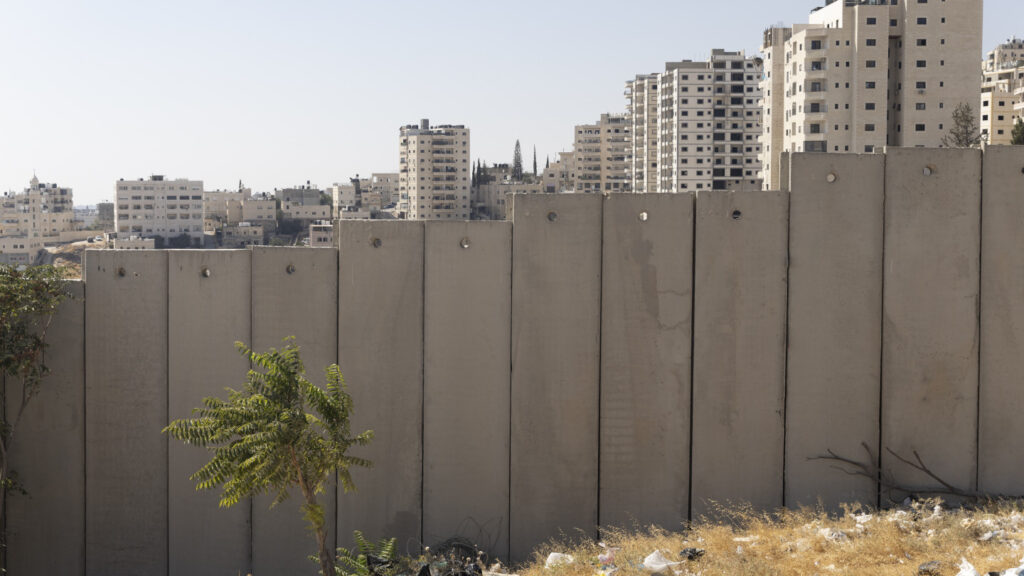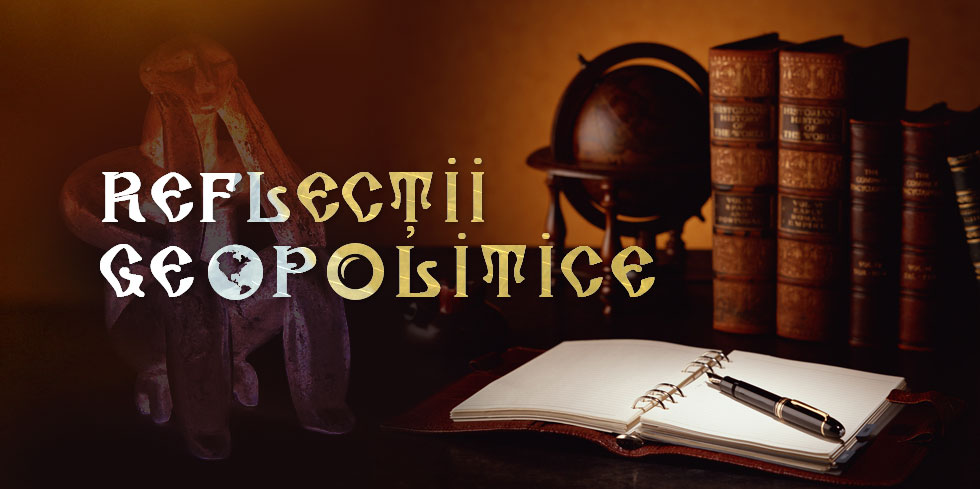
Annexing the West Bank is the culmination of a decades-long Israeli project: the steady dispossession, erasure, and replacement of Palestinians
Israel has crossed a line the world once swore must never be crossed, with maps being drawn up by Israel’s far-right finance minister, Bezalel Smotrich, to annex the West Bank and bring the occupied Palestinian territory under Israeli sovereignty.
For decades, Washington and Brussels both thundered that such a move would be the death knell for Palestinian statehood, the unravelling of international law, and a point of no return.
Yet as Israel openly dismantles the possibility of a Palestinian future, Europe is silent, the United States is complicit, and the international community is a passive witness to the erasure of Palestinians.
The EU’s most incriminating moment
For decades, two of the most prominent red lines the international community has made clear to Israel have been an uncompromising rejection of de jure West Bank annexation or settlement expansion into the E-1 corridor between East Jerusalem and the illegal settlement Ma’ale Adumim.
The former would render the two-state solution officially dead, while the latter would practically “kill the Palestinian state de facto”, as put by Israel’s Finance Minister Bezalel Smotrich, since it would physically dissect the West Bank into two disconnected Bantustans isolated from Palestine’s future capital.
In just a matter of weeks, these once-absolute red lines have simply vanished, erased not by negotiations or compromise, but by silence, distraction, and the collapse of accountability amid the genocide in Gaza.
After a 20-year freeze, the Israeli government gave the green light in late August for constructing 3,401 housing units in the E1 area, which has long been called the “doomsday settlement”.
At the same time, Benjamin Netanyahu’s cabinet is currently finalising plans to “apply sovereignty” to the West Bank (i.e. annexation) within mere weeks. On Wednesday, Smotrich unveiled Israel’s plan to annex over 82% of the West Bank in one fell swoop.
When Israel came this close to the ‘doomsday’ E1 settlement expansion in 2012, France and the UK threatened to withdraw their ambassadors from Tel Aviv, the European Union threatened harsh measures, and the US pressured Netanyahu to reverse course.
“Every world leader has cautioned every Israeli PM: ‘don’t dare do E-1. If you do there will be grave consequences’,” said Daniel Seidemann, an Israeli attorney and expert on Jerusalem. Similarly, when Israel was advancing formal annexation plans in 2020, the EU warned it would put all options on the table and rallied the international community against the illegal move.
This time around, however, those same governments have, at most, issued mild statements of concern that lack any actions to deter Israel’s deliberate destruction of Palestinian statehood.
“This is one of the most incriminating moments in the EU’s handling of the crisis over the last two years,” Martin Konečný, director of the European Middle East Project, told The New Arab.
Ignoring genocide emboldened Israel’s annexation dream
Europe’s failure to hold Israel accountable for its crimes against humanity in Gaza emboldened Netanyahu’s far-right government to chase their ultimate prize of swallowing the West Bank.
“Europe’s inaction in the face of Israel’s war of extermination in Gaza, along with the acceleration of WB annexation, [is what] got E1 approved,” Yehuda Shaul, co-founder of Israel’s Breaking the Silence, told The New Arab.
He cited Israel’s Settlement Minister Orit Strock, delighting in the fecklessness of the international community, who said, “[we’re] living in a period of miracles. I feel like someone standing at a traffic light, and then the light turns green”.
Konečný pointed out that last June, “the EU concluded that Israeli actions in both Gaza and the West Bank violate the EU-Israel association agreement. But the EU then, for political reasons, limited its follow-up only to the issue of humanitarian aid for Gaza”.
Focusing on Gaza was merely a convenient manoeuvre to turn a blind eye and avoid confronting Israel’s accelerated annexation.
Konečný told The New Arab that the EU’s decision “signalled that whatever else Israel does, also in the West Bank, matters less and will not have any consequences. While the EU was debating whether there are a few more aid trucks in Gaza and if that is progress, Israel rammed through its red lines in the West Bank”.
But even the EU’s pretence of being distracted from the rest of the occupied Palestinian territory by Gaza falls apart under the slightest examination.
“Two days after the E1 decision, UN experts declared famine in Gaza. Yet a week later, when EU foreign ministers met, they once again could not find a qualified majority for even the smallest possible sanction measure on the table – a very limited suspension of EU research funding for Israel,” Konečný concluded.
This, in turn, is further incentivising Israel to advance its most brazen assault in history on the existence of Palestinians.
How E1 became the litmus test for Western governments
The “E1 Plan” emerged in 1994 after Israel signed the “Oslo Peace Accords” with the Palestinians. It was Prime Minister Yitzhak Rabin’s guarantee to fanatic settlers that Oslo would not lead to full Palestinian sovereignty and independence, but rather at most to “a separate entity short of a state”.
E1 carried more than bricks and blueprints. It is the settlement expansion that makes geography itself an act of erasure. By connecting East Jerusalem to the third most populated illegal settlement, Ma’ale Adumim, Israel would slice the West Bank into two discontiguous cantons and completely cut Palestinians off from their future capital.
In the face of international pressure, however, Rabin refrained from building settlement units in E1, despite having instructed Housing Minister Binyamin Ben Eliezer to begin planning a neighbourhood in the area.
Successive Israeli governments tested the boundaries and limits of what the international community would let it get away with, by periodically advancing planning and authorisation procedures for E1 and awaiting the world’s reaction.
But Western governments that have long tolerated Israel’s creeping de facto annexation elsewhere in the West Bank drew the line at E1.
By focusing disproportionately on E1 while turning a blind eye to Israeli settlement expansion all over the lands of the future Palestinian state, the international community turned that vital 12km2 corridor into a symbol and a litmus test.
For 30 years, international pressure was enough to keep Israeli bulldozers at bay from E1, while European governments repeatedly visited and funded Khan al-Ahmar in the same area to prevent its demolition and replacement.
Now, with no international constraints or consequences, Israel has seized on the opportunity to not just build in the E1 settlement, but annex the entire West Bank.
Annexation has always been Israel’s plan
Annexation has always been the dream of the Israeli right, explicitly enshrined in the founding charter of Netanyahu’s Likud party and reiterated countless times by Israeli politicians saying there would never be a Palestinian state.
Israel has, however, long understood that formal de jure annexation would provoke a global backlash as it violates the core principle of international law, namely the prohibition on the acquisition of territory by force, and would officially enshrine a system of apartheid.
That is why Israel opted for indefinite military occupation and de facto gradual annexation of the West Bank through Jewish-only settlements and outposts scattered in every part of the occupied territory, as well as checkpoints, closed military zones, roadblocks, bypass roads, and the separation wall.
This is in addition to designating large swathes of land as inaccessible “nature reserves” and “national parks”. The result is that Palestinians today live in less than a third of the West Bank’s area in fragmented and disconnected caged cantons.
The reality on the ground prompted the International Court of Justice to conclude in its 2024 advisory opinion that Israel’s “policies and practices are designed to remain in place indefinitely and to create irreversible effects on the ground. Consequently, the Court considers that these policies and practices amount to annexation,” thus rendering Israel’s occupation illegal.
The first Trump administration emboldened Netanyahu’s government to pursue the dream of formal annexation after the US recognised Jerusalem as Israel’s “undivided capital”, moving its embassy there and cutting off all aid to Palestinians. But Israel’s annexation plan was met with strong international condemnation and threats.
In late 2022, Israel tried to revive the annexation plan and test the boundaries again. Netanyahu’s governing coalition codified annexation into its charter, declaring “The Jewish people have an exclusive and indisputable right to all parts of the Land of Israel”, including the West Bank.
This received no condemnation or backlash from any Western government, which encouraged the Israelis to take multiple subsequent steps to entrench annexation, including transferring sweeping powers over West Bank planning to Finance Minister Bezalel Smotrich.
This meant policies that once would have required Knesset votes could now happen with zoning decisions and budget lines. And again, Western governments responded with silence.
Netanyahu’s coalition has merely been waiting for a pretext to formalise annexation with minimal backlash. In March 2023, Israel’s former Defence Minister Moshe Yaalon warned that Israeli “Jewish supremacist” ministers are trying to “hurry up the ‘last war’”.
Yaalon said those ministers were trying to trigger this war by provoking Palestinians with massacres and assaults. Such provocations aimed to lure Palestinians into a response so that Israel could use their retaliation as a pretext for its “last war”.
What Israel is carrying out today is not a series of isolated moves but the culmination of a decades-long project: the steady erasure, dispossession, and replacement of the indigenous Palestinian population.
From the genocide in Gaza to the doomsday settlement in E-1 and the formal annexation of the West Bank, these actions form a single strategy to erase Palestine as a political and geographical reality.
Once a self-proclaimed guardian of the rule of law and the two-state solution, the international community now stands paralysed, offering condemnatory statements while its own red lines are bulldozed. By failing to act, it has abandoned both the Palestinians and its own credibility.
